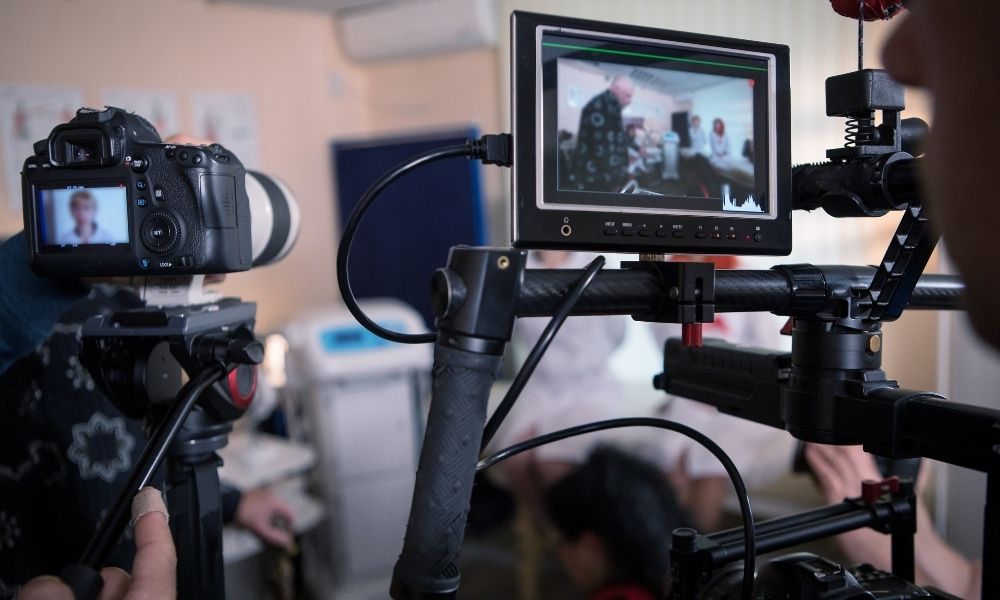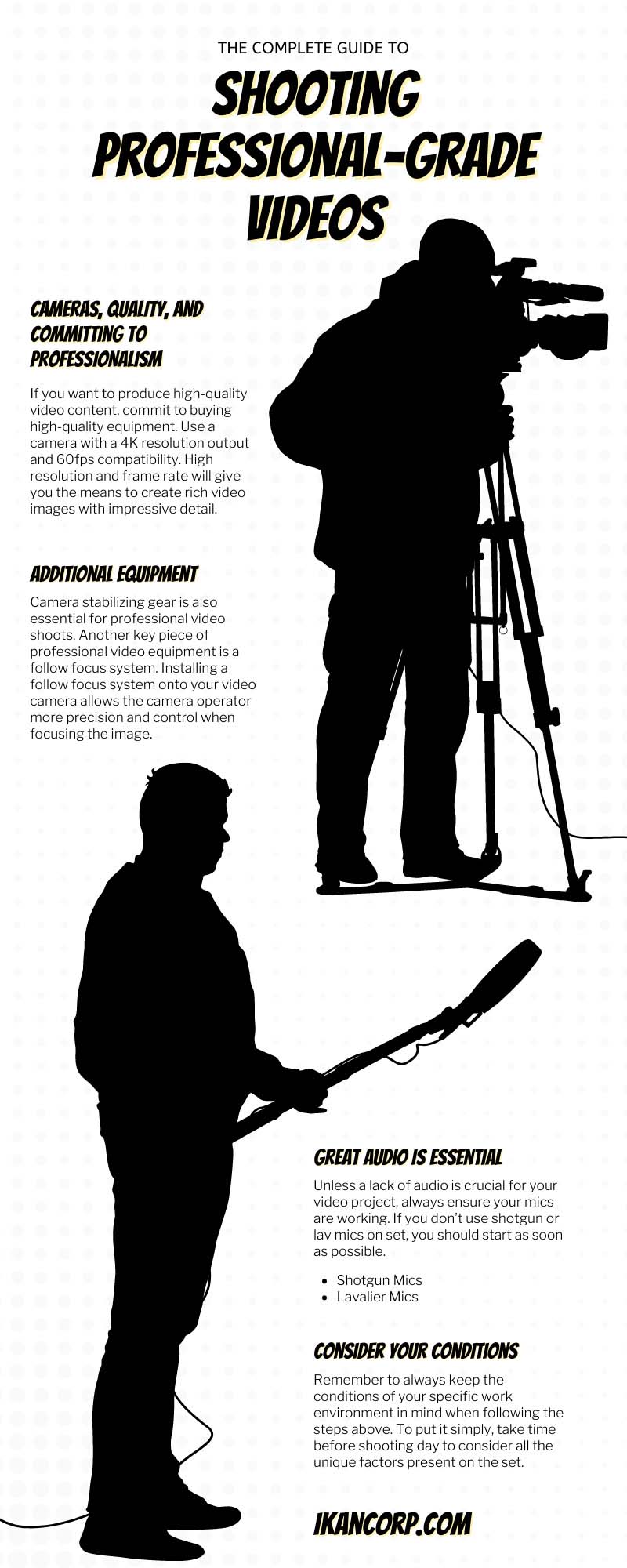
Even content creators who consider themselves professionals can make novice slip-ups here and there. Whether you’re shooting the local news or a church event or impressing viewers and clients—any situation requires understanding the right industry standards and methods.
To ensure you’re using the proper practices in the field, read the complete guide to shooting professional-grade videos, which you’ll find below. Using these techniques in the field will help you create consistently good content for employers and audiences alike.
Cameras, Quality, and Committing To Professionalism
If you don’t have one already, shooting professional-grade videos starts with getting a high-quality camera. However, before buying a single piece of equipment, it’s important to think about what it means to create professional video content. To put it bluntly, wanting to create professional-quality content doesn’t mean you currently are. If you want to produce high-quality video content, commit to buying high-quality equipment. Take advantage of the best tech on the market from the leading, reliable brands. With reliable, top-tier equipment, you can create content reflective of those factors.
Following the principles above will help you find the right video camera for your needs, but there are also additional factors to consider. Whatever the purpose of your video shoot is, if you want to be a pro, you need the right video camera. Use a camera with a 4K resolution output and 60fps compatibility. High resolution and frame rate will give you the means to create rich video images with impressive detail. Even if a 4K camera is out of your price range, a camera with a 1080p HD output will still allow you to create visually impressive content.
Additional Equipment
Although a 4K camera is nice on its own, most professional video productions need the help of additional camera equipment. For instance, if you don’t have a high-quality camera cage rig, seek one out. Camera rigs are capable of carrying various beneficial camera attachments. Plus, a good camera cage rig has a sturdy set of handles operators can hold to keep the video image from appearing shaky or blurry.
Camera stabilizing gear is also essential for professional video shoots. Handheld footage is suitable for certain projects, but for most professional video productions, prioritizing stable, clear footage is the way to go. Although a good tripod can keep the camera secure, a sturdy camera pedestal gives productions more flexibility without compromising stability.
In fact, at Ikan, we produce a camera pedestal professionals can use to secure and maneuver even the heaviest camera equipment. As mentioned earlier, camera cages with handles can help you capture stable handheld footage but won’t be the right option for every shoot; camera weight and maneuvering requirements are two key components to consider in this scenario. Specific shooting conditions are always important to consider, but that’s a subject we’ll elaborate on further below.
Another key piece of professional video equipment is a follow focus system. Installing a follow focus system onto your video camera allows the camera operator more precision and control when focusing the image. More specifically, a follow focus system gives the camera operator a means of smoothly adjusting focus when filming moving subjects. In many situations, movement can spell disaster for camera focus. If you have a follow focus system and a reliable operator at the helm, movement in-frame won’t be so disruptive.
Great Audio Is Essential
Although this is the complete guide to shooting professional-grade videos, your audio quality is an essential topic to cover. Even if you have the most pristine video image, poor audio will render your content unwatchable to many. Various issues can endanger your audio quality—loud background noise, incomprehensible dialogue, or no sound altogether. Unless a lack of audio is crucial for your video project, always ensure your mics are working. If you don’t use shotgun or lav mics on set, you should start as soon as possible.
Shotgun Mics
One of the most popular sound recording devices you’ll see on production sets is a shotgun mic. A shotgun mic is a long, narrow audio recording device capable of capturing clear audio as long as you aim it at your subject. The purpose of a shotgun mic is to record the sound of your subject while minimizing background noise, hence why it’s such a useful tool for professional productions.
There are multiple ways to set up shotgun mics on set. One way is to attach the mic right onto your camera; easy and straightforward. However, a widespread method for recording audio via shotgun mic, especially on large sets, is attaching the device to a boom pole—a large pole that an operator can use for holding the mic. Why? By attaching the recording device onto the boom pole, an operator can securely position the microphone just out of frame, right above the subjects, to ensure crystal clear audio.
Lavalier Mics
Another popular mic for professional video productions is a lavalier. A Lavalier mic, aka “lav mic,” is an audio recording device you can attach directly onto a video subject’s clothing. Learn more about wired and wireless lav mics to figure out what’s best for your production. By attaching the mic right onto your subject, you can pick up clean audio throughout your recording, whether you’re shooting an interview or a sports news segment. The benefit of a lav mic is that you can record clean audio while your subject is moving around. Instead of worrying about a boom operator moving with your subject, a lav mic remains carefully concealed on their clothing.
Consider Your Conditions
Remember to always keep the conditions of your specific work environment in mind when following the steps above. For instance, properly shooting an outdoor segment in the sun is different from how you’d shoot the segment in a dark studio. Likewise, as mentioned earlier, there are various camera mounts you can rely on depending on the shots you’re trying to execute. To put it simply, take time before shooting day to consider all the unique factors present on the set.
In doing so, you can plan out a concise, smart plan for capturing professional-grade content. Even if you’re shooting in the same studio each time, certain factors can change, from the topic of discussion to the set layout. Creating professional video content requires a knack for adapting to the situation. Small, unexpected changes to shooting conditions can have a major impact on your original plan, but having a handful of solutions under your belt can minimize that impact significantly.

